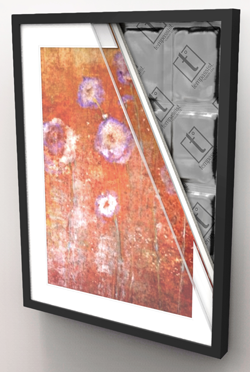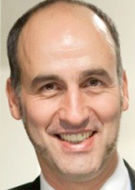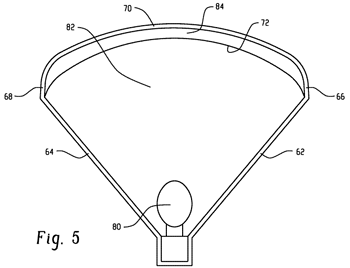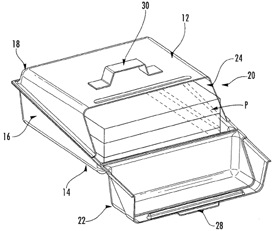 The Phase Change Matters e-mail newsletter is a weekly summary of the latest news and research on phase change materials and thermal energy storage. To subscribe, visit www.puretemp.com/subscribe. For more frequent updates, follow @puretemp on Twitter or visit the Phase Change Matters blog, www.puretemp.com/pcmatters.
The Phase Change Matters e-mail newsletter is a weekly summary of the latest news and research on phase change materials and thermal energy storage. To subscribe, visit www.puretemp.com/subscribe. For more frequent updates, follow @puretemp on Twitter or visit the Phase Change Matters blog, www.puretemp.com/pcmatters.
NEW PRODUCTS
Managing room temperature with PCM? There’s an art to it
A good piece of framed art can light up a room. Now, to some degree, it can also heat and cool it.
 Tempassist, a wall decor system developed by Larson-Juhl of Norcross, Ga., and Phase Change Energy Solutions of Asheboro, N.C., is designed to maintain comfortable temperatures and reduce energy costs.
Tempassist, a wall decor system developed by Larson-Juhl of Norcross, Ga., and Phase Change Energy Solutions of Asheboro, N.C., is designed to maintain comfortable temperatures and reduce energy costs.
Here’s how it works: BioPCM, a biobased phase change material made by PCES, is enclosed in multi-layer film mats and placed in each frame, behind a large piece of art. The PCM absorbs excess heat when temperatures rise above 72 degrees F. When room temperature falls below 72, the PCM releases the heat.
PCES says the system, which is now aimed at commercial customers such as hotels, hospitals and office buildings, offers a minimum 40 percent reduction in HVAC run times and 50 percent reduction in system on/off cycles, using temperature-control materials lasting more than 85 years.
Larson-Juhl is bringing Tempassist to market under a partnership/licensing agreement with PCES.
Doug Doolen, PCES’ Tempassist expert, answered questions about the product by email:
Q: How did the idea for this product originate?
A: In 2015, Phase Change Energy Solutions, Inc. (Phase Change) had a tech partner group introduce us to Larson-Juhl, a Berkshire Hathaway Company with a hundred-year history in manufacturing innovative custom picture frame moldings and wall décor all over the world.
In early discussions, Phase Change presented ENRG Blanket and BioPCM as a plant-based phase change material that can work in any orientation inside the building envelope. As an example, Phase Change mentioned use in a large coffeehouse as a place where ENRG Blanket could be incorporated behind the wall décor and pictures they had on display. This would help buffer thermal loads during peak hours associated with people and long lines and thus drive energy savings.
LJ asked if the same concept could be applied to any room with wall décor that they supply across the world.
Phase Change produced scale-model replicas of various rooms and validated proof of concept. This was then scaled to demonstrate performance with different material densities, conductivity and performance.
Full-size room/multiple-room testing commenced late in 2015 to prove room savings, distribution within the room and finally performance. This led to several successful full-building tests which showed significant energy savings that is consistent (often exceeding) the advertised 25-35% HVAC energy savings.
Q: Which PCM is used? C23? C25? Or a new PCM altogether?
A: BioPCM is the material powering Tempassist. It is specifically tuned (transition temperature and mass) to perform to this specific application. Larson-Juhl has also incorporated various features and construction elements that enhance overall performance.
Q: What’s your take on the potential market size?
A: Market size is quite large when you consider the number of retail and commercial structures with multiple room/floor configurations.
THERMAL ENERGY STORAGE
Value of TES ‘not always fully recognized by policymakers‘
Heating and cooling in buildings and industry accounts for half of Europe’s energy consumption, and yet the potential “immense value” of thermal energy storage has barely been explored, the head of an energy storage trade group says.
 “Despite its immense value to the energy system, the role of thermal energy storage concepts is not always fully recognized by policymakers,” Patrick Clerens, secretary-general of the European Association for Storage of Energy, said in an interview with Energy Storage News.
“Despite its immense value to the energy system, the role of thermal energy storage concepts is not always fully recognized by policymakers,” Patrick Clerens, secretary-general of the European Association for Storage of Energy, said in an interview with Energy Storage News.
In a position paper published in July, the trade group called for economic incentives such as accelerated depreciation, better regulatory framework to “ensure non-discriminatory access to energy grids” and improved support from European Union research agencies.
PATENT APPLICATIONS
Enclosure with a condensation-resistant interior surface
U.S. patent application 20170254503 (applicant Sabic Global Technologies BV, Netherlands):
 “In an embodiment, an enclosure comprises walls forming the enclosure, wherein the enclosure comprises an internal space; an inhibiting element disposed in at least one wall, the inhibiting element having an internal inhibiting surface exposed to the internal space, wherein the inhibiting element has a transparency of greater than or equal to 20%; and a condensing element disposed in at least one other wall, the condensing element having an internal condensing surface exposed to the internal space; wherein at least one of the inhibiting element and the condensing element comprise a phase change material [84] configured to form a temperature differential between an internal inhibiting surface temperature and an internal condensing surface temperature over a temperature range.”
“In an embodiment, an enclosure comprises walls forming the enclosure, wherein the enclosure comprises an internal space; an inhibiting element disposed in at least one wall, the inhibiting element having an internal inhibiting surface exposed to the internal space, wherein the inhibiting element has a transparency of greater than or equal to 20%; and a condensing element disposed in at least one other wall, the condensing element having an internal condensing surface exposed to the internal space; wherein at least one of the inhibiting element and the condensing element comprise a phase change material [84] configured to form a temperature differential between an internal inhibiting surface temperature and an internal condensing surface temperature over a temperature range.”
TES systems comprising encapsulated PCMs and a neutralizing agent
U.S. patent application 20170254601 (applicant Entropy Solutions LLC, Plymouth, Minn.):
“Provided are Thermal Energy Storage (TES) systems comprising Phase Change Material (PCMs) compositions for thermal management in different applications such as building, automotive, and industrial applications. Provided are TES systems comprising encapsulated PCMs and a heat transfer medium comprising a neutralizing agent and/or an ion exchange resin capable of neutralizing the acidic or basic PCM contained in the capsules, should the PCM permeate the walls of the capsules or otherwise be released into the surrounding heat transfer medium.”
Product transport container
U.S. patent application 20170253409 (applicant Phase Change Energy Solutions Inc., Asheboro, N.C.):
 “Product transport containers are disclosed. Such containers can provide one or more advantages compared to existing containers. For example, product transport containers described herein can maintain a product at a desired temperature for an extended period of time, including without the use of an active heating or cooling component. Such product transport containers described herein may also provide improved breathability, thermal insulation, and/or mechanical strength or dimensional stability. Such containers can include a plurality of walls defining an interior volume and a selectively openable side permitting movement of the product into and out of the interior volume of the container. The walls can be formed from a thermoformed non-woven fabric.”
“Product transport containers are disclosed. Such containers can provide one or more advantages compared to existing containers. For example, product transport containers described herein can maintain a product at a desired temperature for an extended period of time, including without the use of an active heating or cooling component. Such product transport containers described herein may also provide improved breathability, thermal insulation, and/or mechanical strength or dimensional stability. Such containers can include a plurality of walls defining an interior volume and a selectively openable side permitting movement of the product into and out of the interior volume of the container. The walls can be formed from a thermoformed non-woven fabric.”
IN BRIEF
• The German company Covestro is providing technology for use in solar-powered micro cold rooms in India. The cold rooms employ phase change material to keep produce cool until it can be transported from farm to market. Eight hundred units will be built in the Indian state of Telangana over the next two years.
• In an interview with the San Jose Mercury News, Anthony Diamond talks about the musical connection he shares with Axiom Exergy co-founder Amrit Robbins. They met as undergrads at Stanford University. “I play saxophone, he’s actually a trumpet player,” Diamond said. “He was like, the best jazz trumpet player on campus. So whenever I had a gig, I would call him, and vice-versa. We had an opportunity to collaborate a lot within that context. I knew that I worked really well with him and we were a really great team.”
• Heat battery maker Sunamp Ltd. is one of 15 European scaleups selected to give presentations in California next week at Startup Europe Comes to Silicon Valley.
• Pelican BioThermal has opened a service center in Puerto Rico. The center will serve as a depot for the company’s Credo on Demand rental program and enable customers to receive and return reusable temperature controlled packaging systems.
• Facebook has announced that its cloud campus in Odense, Denmark, will be connected to a neighborhood district heating system. The company expects the system will warm 6,900 homes.
• Evelyn Wang, director of MIT’s Device Research Laboratory and an internationally recognized leader in phase change heat transfer on nanostructure surfaces, has been named associate department head of operations in the school’s Department of Mechanical Engineering.
• Long-Qing Chen, professor of engineering science, mechanics and mathematics at Penn State University, has been awarded a Humboldt Research Award by the Alexander von Humboldt Foundation of Germany. Chen will work with Jürgen Rödel, professor of materials science and engineering at the Technische Universität Darmstadt, on areas of mutual interest, including multiferroic thin films and phase change materials.
• MIT researchers are taking a look at 3,000-year-old technology that could help reduce the use of fossil fuels. Under the proposal, electric resistance heaters would convert excess electricity into heat. The heat would be stored in a large mass of firebricks, which can retain heat for long periods if they are enclosed in an insulated casing. The heat could be used directly for industrial processes, or it could feed generators that convert it back to electricity when the power is needed.
RESEARCH ROUNDUP
For our full list of recent academic research, see puretemp.com/academic. Here are highlights from the past week:
From International Journal of Refrigeration:• Reduction of supercooling in paraffin phase change slurry by polyvinyl alcohol
From Colloid and Polymer Science:
• Preparation, characterization, and thermal stability of double-composition shell microencapsulated phase change material by interfacial polymerization
From Solar Energy:
• Heat transfer characteristics of a hybrid thermal energy storage tank with Phase Change Materials (PCMs) during indirect charging using isothermal coil heat exchanger
From Solar Energy Materials and Solar Cells:
• Hybrid network structure of boron nitride and graphene oxide in shape-stabilized composite phase change materials with enhanced thermal conductivity and light-to-electric energy conversion capability
• Advancement in phase change materials for thermal energy storage applications
• Study on solidification process of sodium acetate trihydrate for seasonal solar thermal energy storage
From Energies 2017:
• Encapsulated Nitrates Phase Change Material Selection for Use as Thermal Storage and Heat Transfer Materials at High Temperature in Concentrated Solar Power Plants
From Applied Thermal Engineering:
• Influence of nanoparticle morphology and its dispersion ability regarding thermal properties of water used as Phase Change Material
• The optimal allocation of the PCM within a composite wall for surface temperature and heat flux reduction: an experimental approach
• An innovative practical battery thermal management system based on phase change materials: Numerical and experimental investigations
From Cement and Concrete Composites:
• Incorporating phase change materials in concrete pavement to melt snow and ice
From Applied Energy:
• Experimental study on thermal performance of phase change material passive and active combined using for building application in winter
• Dynamics of phase change in a vertical PCM capsule in the presence of radiation at high temperatures
From Renewable and Sustainable Energy Reviews:
• Thermodynamics behavior of phase change latent heat materials in micro-/nanoconfined spaces for thermal storage and applications
From Energy Procedia:
• Using phase change material in under floor heating
NETWORKING
Connect with PCM experts and industry leaders on LinkedIn
More than 1,100 people have joined a LinkedIn group devoted to the discussion of phase change material and thermal energy storage. The Phase Change Matters group is an interactive complement to the award-winning blog and newsletter of the same name.
 You are invited to join the group and connect with PCM and TES experts from around the world. New members include Olaf Humbeck, chief operating officer at oh-Group GmbH, Versmold, Germany; Louis Desgrosseilliers, chief research and technology officer at NeoThermal Energy Storage Inc., Halifax, Canada; Samer Kahwaji, research associate, Thermal Properties of Materials Lab, Dalhousie University, Halifax; and Rupamaathavan Perumal, technical trainee engineer, Lloyd’s Register, Mumbai, India.
You are invited to join the group and connect with PCM and TES experts from around the world. New members include Olaf Humbeck, chief operating officer at oh-Group GmbH, Versmold, Germany; Louis Desgrosseilliers, chief research and technology officer at NeoThermal Energy Storage Inc., Halifax, Canada; Samer Kahwaji, research associate, Thermal Properties of Materials Lab, Dalhousie University, Halifax; and Rupamaathavan Perumal, technical trainee engineer, Lloyd’s Register, Mumbai, India.